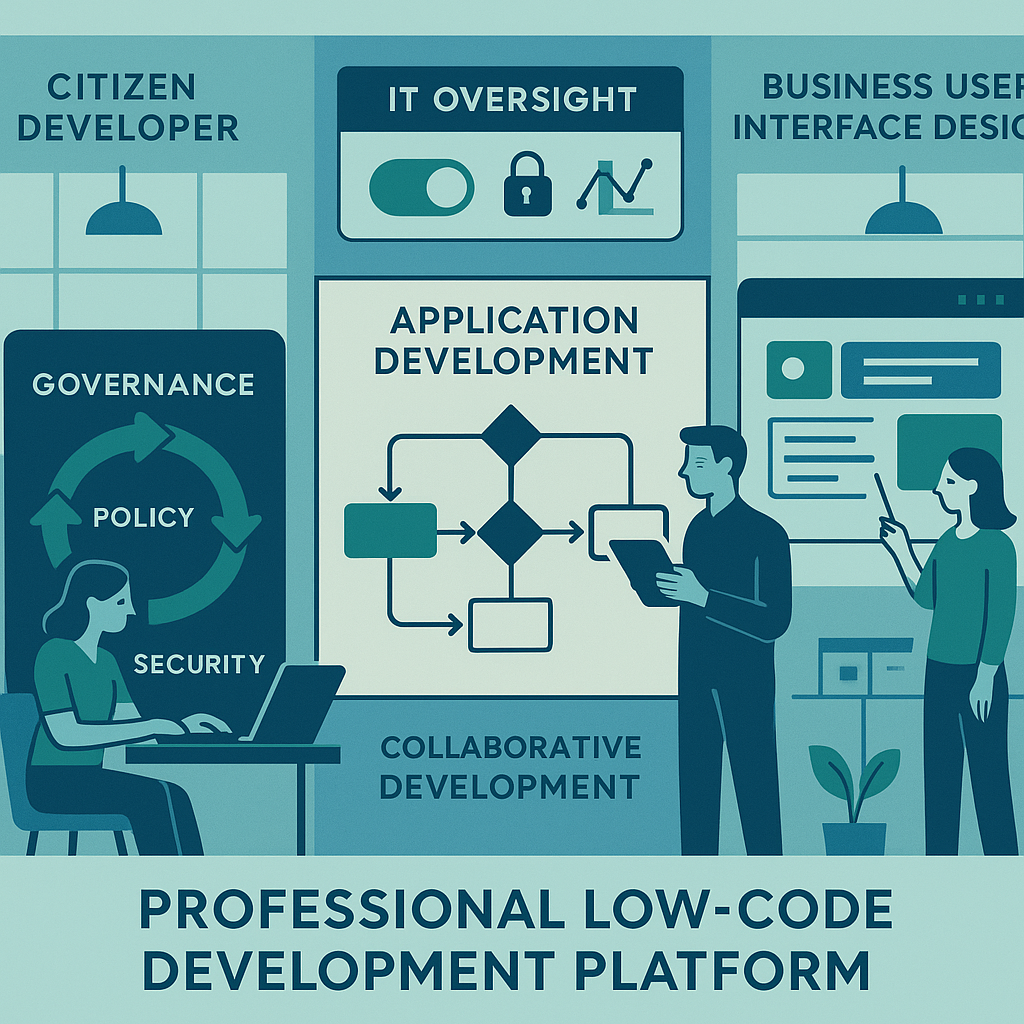
Table of Contents
Understanding the Citizen Developer Revolution
There’s a quiet revolution happening in enterprise IT, powered by a new class of builders: the citizen developer. These are tech-savvy business users in finance, HR, or operations who, armed with low-code/no-code platforms, are building their own applications and automating their own workflows. This movement is a double-edged sword. On one hand, it promises unprecedented agility and problem-solving at the departmental level, allowing business units to rapidly address their specific needs without waiting on overburdened IT departments. On the other, it threatens to create a new, more dangerous form of “shadow IT,” potentially leading to security vulnerabilities, data inconsistencies, and maintenance nightmares.
Insights distilled from numerous complex system deployments show that this isn’t a trend to be stopped, but one to be managed. The energy of citizen developers is like a wildfire; unmanaged, it can cause chaos, but properly channeled, it can clear away legacy underbrush and foster new growth. The challenge is building the firebreaks (establishing a robust governance framework that empowers innovation while safeguarding the enterprise).
The New “Excel on Steroids”
From Excel to Low-Code: The Evolution of Shadow IT
For decades, the biggest source of shadow IT was the complex, macro-driven Excel spreadsheet. It was powerful, ubiquitous, and completely outside the control of IT governance. Today’s low-code tools are exponentially more powerful. A business analyst can now build an application that connects to a production database, calls an external API, and orchestrates a critical business process. This shift means that the potential impact of ungoverned development is far greater than ever before.
What happens when that analyst leaves the company? Who maintains the app? How is the data it handles secured? Is it backed up? These are the questions that keep CIOs and CFOs up at night. Without a governance framework, companies risk creating thousands of unmanaged, unsupported, and insecure applications that are deeply embedded in their operations, posing significant operational and compliance risks.
A Framework for Harnessing the Fire
Establishing a Strategic Governance Framework
Instead of banning these tools, a strategic approach involves creating a framework that empowers users while protecting the enterprise. A mature governance model typically includes a few core pillars, designed to foster a collaborative environment between IT and business.
- A Center of Excellence (CoE): This is a central team, often a collaboration between IT and business units, that provides best practices, training, and reusable components. They don’t build everything, but they teach others how to build correctly, offering guidance on security, data integrity, and performance. The CoE acts as a facilitator, not a gatekeeper.
- Clear Data Guardrails: The CoE must define what data sources can be accessed. They might provide curated, read-only data connectors to sensitive systems while allowing more open access to departmental data. This prevents a well-meaning marketing specialist from accidentally writing bad data into the ERP or exposing sensitive customer information. Data governance policies should be clear, communicated, and enforced through the platform itself where possible.
- A Tiered Application Model: Not all citizen-built apps are created equal. A simple vacation request form is very different from a tool that calculates sales commissions. A governance model should classify applications based on their business criticality, data sensitivity, and scope. A “Tier 1” app, for instance, might require a formal IT review, security testing, and a dedicated support plan, while a “Tier 3” personal productivity tool might only need basic adherence to naming conventions. This tiered approach allows for appropriate levels of oversight without stifling innovation.
- Training and Support: Providing adequate training and ongoing support is paramount. Citizen developers need to understand the capabilities and limitations of the tools, as well as the organizational policies. A robust support system ensures that when issues arise, they can be addressed efficiently, preventing the proliferation of unsupported applications.
Implementing Governance for Platform Success
Platforms like Appian and Pega provide powerful capabilities, but their success hinges on this kind of thoughtful governance. The goal isn’t to stifle innovation. It’s to build a safe, sustainable ecosystem where it can flourish, transforming business users into active participants in digital transformation rather than passive consumers of IT services.
How is your organization balancing empowerment and control? I’d be interested to hear your perspective on LinkedIn.